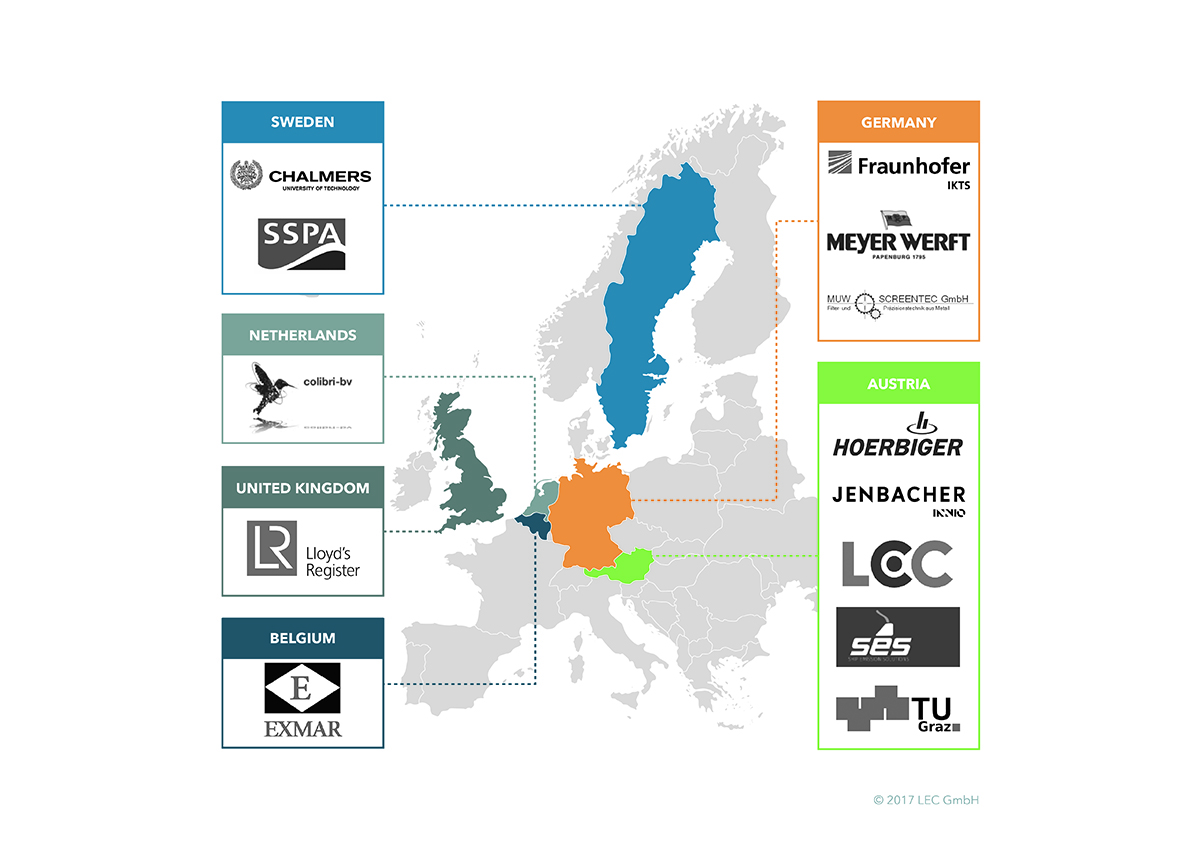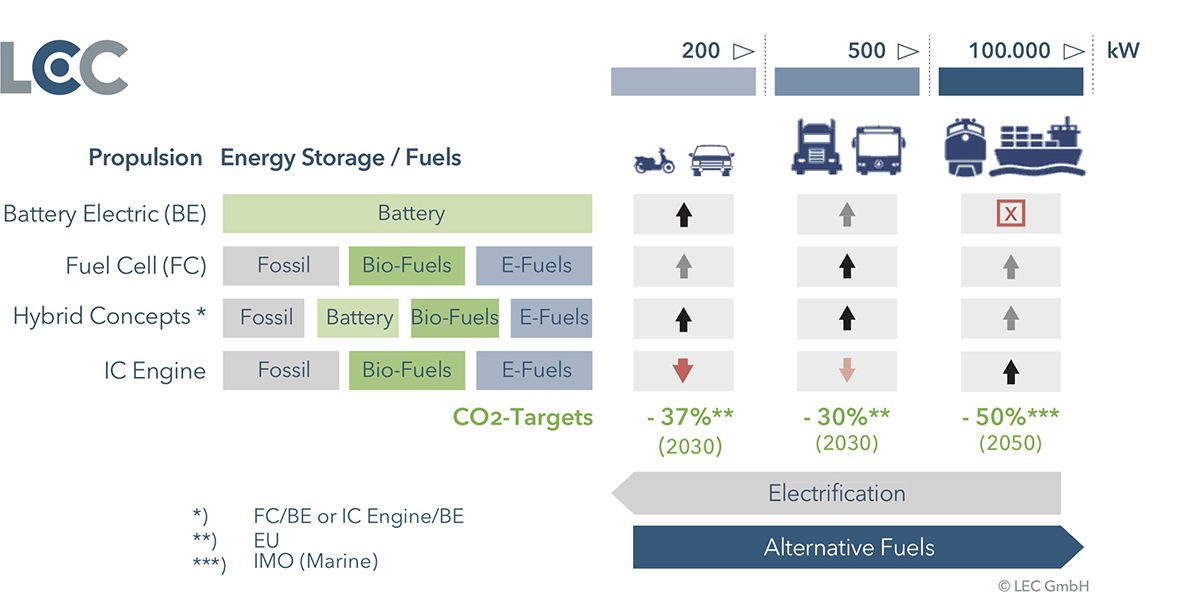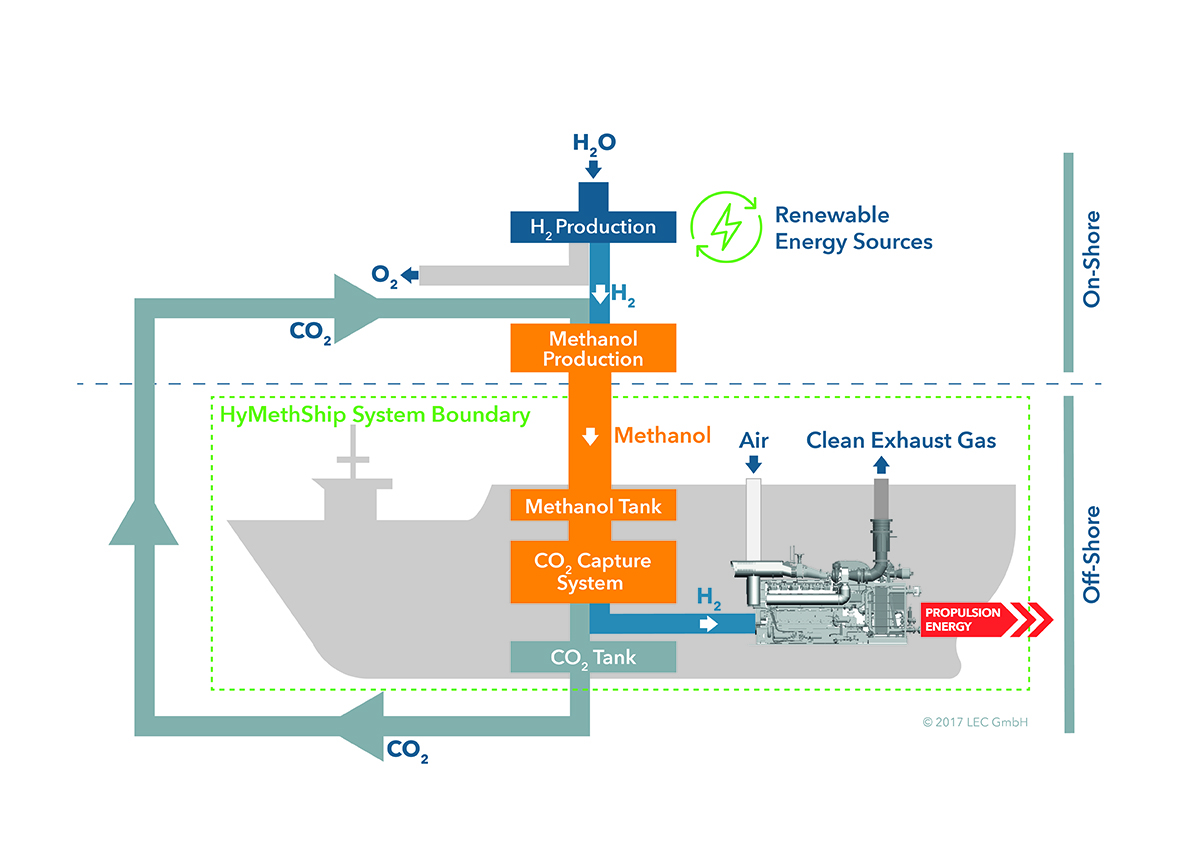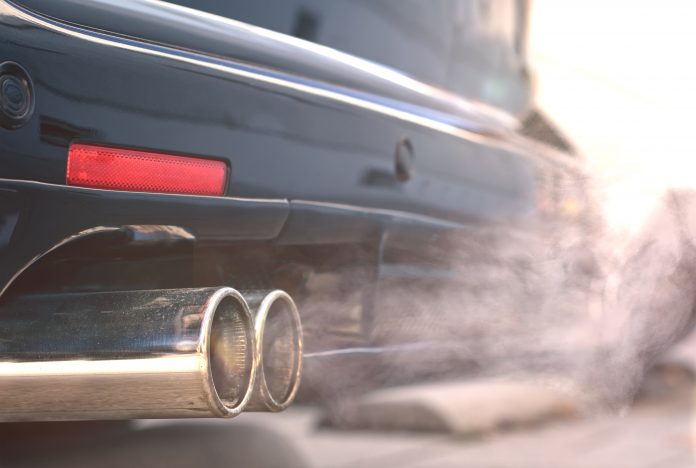The LEC is developing large-bore internal combustion engines that emit close to zero emissions, run efficiently on a variety of fuels and are robust. Here, future large engine technology developed in Graz is discussed
It is a fact that our energy technology and transportation systems need to be greener. The sustainable energy cycle meets the big ones: large-bore combustion engines used for ship propulsion or power generation.
Large engines: “The big players” in power generation and transportation
Climate change requires new approaches to reducing energy needs as well as the emissions that are produced. Politicians tend to push for the expansion of renewable energy sources to lower CO2 emissions. To compensate for the resulting fluctuations in the electrical grid, fast-reacting and highly flexible power plants will play a greater role. Yet, even they will have to operate on CO2 neutral fuels in the future. Therefore, the most important technology will be power-to-X in the form of hydrogen, synthetic methane or other hydrogen-based fuels, such as methanol and ammonia.
Hydrogen and e-fuels: A dramatic reduction in CO2 emissions in mobility and transportation
Alternative fuels will also be decisive for the mobility and transportation sector to achieve the CO2 targets of the various segments to be implemented in a short time, compare Figure 2 Trends in propulsion for mobility and transport. Pure battery-electric powertrains will generally be suitable for smaller applications, such as scooters and small cars while alternative fuels must be used in larger applications.

Although electrification in the form of hybridisation will also be employed in these applications, pure battery-electric powertrains can only be used in niches. For this reason, other approaches are required, especially in the area of deep-sea shipping.
HyMethShip: Green shipping is possible
As the project coordinator and the leader of a powerful consortium in the European Union (EU) project HyMethShip, the LEC is at the head of efforts to explore an alternative propulsion system based on methanol for hydrogen storage. This innovative and cooperative research is bearing fruit: the researchers are well on the way to achieving a CO2 reduction of more than 97% and almost completely eliminating sulfur dioxide and particulate emissions. Nitrogen oxide emissions will be reduced by more than 80%, which is significantly below the IMO Tier III limit. The energy efficiency is expected to be more than 40% better than the best available technology.
All this is possible with an innovative combination of a membrane reactor, a capture and storage system for CO2 and a hydrogen-fuelled combustion engine. The starting product is water. Using renewable electricity, hydrogen is obtained from water and then used to form methanol on land. Onboard, hydrogen is produced from methanol and then the CO2 resulting from this process to make methanol on land. The figure 3 shows how the sustainable green shipping cycle works.
Hybrid and multi-method simulation solutions
The large engine specialists are working and thinking holistically. The unique test facilities meet multi-method simulation and validation approaches and creative scientific researchers. Hybrid is the keyword, not only concerning material combinations but also concerning new simulation approaches. “We can use our completely new simulation approach to depict phenomena that were previously impossible to model. This improves the accuracy of the model prediction,” says Andreas Wimmer, CEO of the LEC. “We are combining new and old ideas into big innovative concepts. That’s what we did, for example, in our EU project, HyMethShip.”
Top-class consortium
The EU project HyMethShip is backed by a powerful consortium of 13 top-class partners from six EU member states. Covering the whole shipping sector value chain, it includes two universities, component and engine manufacturers, one shipyard, one shipping company, one classification society and renowned scientific partners (see figure 1).

The LEC’s emphasis on the importance of stable networks
Cooperation and internationalisation are of great importance to large engine specialists. “Recently, we initiated the LEGRIP network. The Large Engines Global Research and Innovations Platform, or LEGRIP for short, is the very first global research network in the field of large engines. LEGRIP offers the opportunity for intensive exchange and collaboration between its members,” says Andreas Wimmer, CEO of the LEC. “In order to master global challenges, such as achieving climate goals, we must pool our strengths and know-how and promote targeted exchange. International networking is central to research, and science thrives on the exchange of information.”

The LEC Sustainable Shipping Technologies Forum – another network initiated by the LEC – stresses the need for and the importance of sustainable solutions for the shipping industry.
The LEC is one of the leading research institutes for large engine technologies and develops visionary concepts for sustainable energy and transportation systems. Based in Austria, the research company is located on the campus of Graz University of Technology.
For further information on the LEC and on the project, visit www.lec.at or www.hymethship.com
Please note: This is a commercial profile











